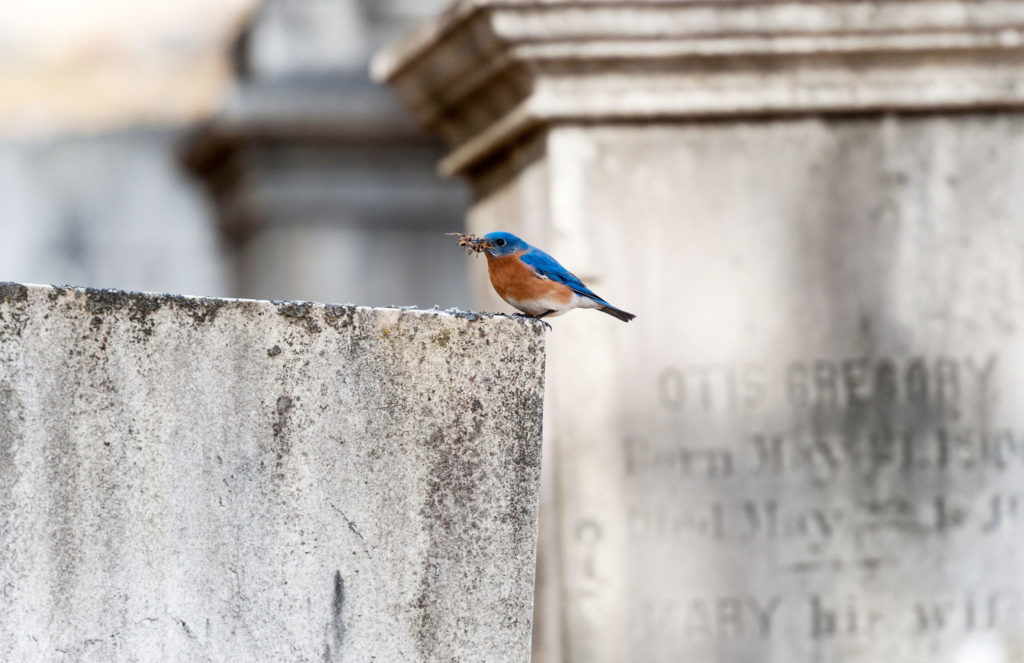The Use of Cemeteries

As someone who spends a lot of time in cemeteries, I’m interested in how these spaces become forms of public space, especially in urban centers, but also in small towns without sufficient parks. When my wife taught in rural Pennsylvania, the cemetery was the place to jog, take a walk, or walk your dog because, well, where else were you going to go? It was the only significant green space in the town. Of course, this causes some tension because, well, that’s not what cemeteries are designed for. Some cemeteries have pretty strict rules against them being used for anything but honoring the dead, others are pretty cool with the idea of them being public spaces.
For example, bird watching. On the east coast especially, which is a major migration corridor, the lack of green space affects not only humans, but our avian friends. They need those spaces. And if you want to see birds in a lot of cities, the cemetery is in fact the very best place to go. Sometimes, that can lead to tensions.
Sometimes, crowds of birders flock en masse. That happened in 2017, when a red morph Eastern screech-owl attracted crowds eager to snap its photo and hear its trilling whinny. Less common than gray- and brown-patterned Eastern screech-owls, the red morph is described as “a lovely, rufous, foxy colour” by Robert Curry in his book, Birds of Hamilton and Surrounding Areas. Because this relatively unusual owl turned up in the easily accessible cemetery, the burial grounds became a hotspot for birders and photographers. The mingling of birders and mourners revived conversations about how burials and recreation can—or can’t—coexist in cemeteries.
Hudecki and the Hamilton birding community aren’t alone in their fondness for cemetery birdwatching. Danielle Belleny, a wildlife biologist from Springfield, Missouri, has earned the social media moniker ‘the cemetery birder’ thanks to her enthusiasm for the pastime. Belleny is drawn to cemeteries for their atmosphere and accessibility. “I enjoy how tranquil they are, but also how easy it is to get to a cemetery,” she says. “Instead of having to go to a park that might be 30 minutes away, I can just go down the street to the cemetery, and have that same type of feeling of being able to recenter myself.”
Of course, sometimes cemeteries do in fact do what they are designed to do. I’ve been in cemeteries looking for historical graves on a number of occasions where I’ve been delayed or it just hasn’t happened because of a nearby funeral happening. Those mourning people may well not be happy to see people watching birds as they bury their loved ones. On the other hand, we are so short of green space in many of our cities that there’s no real way around it without the cemeteries just banning people who aren’t directly visiting a dead relative or friend. And that would be unfortunate.
But again, most are pretty OK with it.
Rules and regulations for activities in Ontario cemeteries are set out in by-laws. While there are some oddities or holdovers from bygone eras—for example, the nearby City of Burlington includes horses in the list of pets that are banned from cemetery grounds—there’s nothing against visiting a cemetery for recreation. In fact, Hamilton Municipal Cemeteries, which oversees Woodland Cemetery, provides a cemetery etiquette guide acknowledging that “cemeteries are wonderful park-like settings,” where one can “enjoy the natural beauty of the plants, trees, and landscape.” All visitors are asked to avoid trampling on graves or clambering on monuments (even if doing so would afford a great look at an intriguing bird).
So go visit some historical graves and see some cool birds while you are at it.


